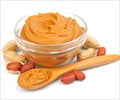It is a known fact that cereals are considered a rich plant source of carbohydrate, proteins, vitamins, and minerals. Hence, they are usually introduced to an infant's diet between the ages of four and six months. However, the question that arises are about the the antinutrients that cereals are also rich in, which can decrease the absorption of critical nutrients such as iron, calcium, and zinc because of their high ability to chelate and precipitate minerals.
Given the importance of an adequate intake of minerals during infancy, Dr. Carmen Frontela and her colleagues in the University of Murcia (Spain) tested the effect of the dephytinization of three different commercial infant cereals on iron, calcium, and zinc bioavailability. Their study will be published on April 28, 2009 in the World Journal of GastroenterologyIn this study, Both dephytinized and non-dephytinized infant cereals were digested using an in vitro digestion protocol adapted to the gastrointestinal conditions of infants younger than 6 months. Mineral cell retention, transport, and uptake from infant cereals were measured using the soluble fraction of the simulated digestion and the Caco-2 cells.
They found that Dephytinization of infant cereals significantly increased (P < 0.05) the cell uptake efficiency (from 0.66%-6.05% to 3.93%-13%), retention (from 6.04%-16.68% to 14.75%-20.14%) and transport efficiency (from 0.14%-2.21% to 1.47%-6.02%), of iron, and the uptake efficiency (from 5.0%-35.4% to 7.3%-41.6%) and retention (from 4.05%-20.53% to 14.45%-61.3%) of zinc, whereas calcium only cell uptake showed a significant increase (P < 0.05) after removing phytate from most of the samples analyzed. A positive relationship (P < 0.05) between mineral solubility and the cell uptake and transport efficiencies was observed.
This study indicated that removing phytate from infant cereals had a beneficial effect on iron and zinc bioavailability when infant cereals were reconstituted with water. The studyalso demonstrated that Caco-2 cell lines are useful tools for study of mineral absorption and simultaneously to characterize the effect of some food components on mineral intestinal absorption. This research could be relevant not only for scientists in the field of human nutrition, but also for food manufacturers and consumers.
Source-Eurekalert
TAN















